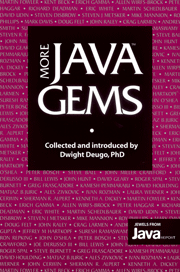INTRODUCTION
Published online by Cambridge University Press: 06 July 2010
Summary
TheJava Report published its first issue in March 1996. This was a real accomplishment when you consider that it was only on May 23, 1995, that John Gage, director of the Science Office for Sun Microsystems, announced Java to the world at SunWorld. Later in 1995, Sun released the initial Java Development Kit (JDK) and a Java enabled Web Browser called HotJava. The rest is history, as Java is now firmly entrenched in the computing industry. Many of us who saw demonstrations of Java in 1995 knew that it was something new, something different, and something not to be ignored. Those behind the Java Report knew this too, and we have been reporting on Java ever since.
In his first editorial for Java Report, the original Editor-In-Chief, David Fisco, wrote:
The Java community is becoming broader every day, encompassing CIOs, information technologists, market professionals, programmers, multimedia designers, educators, managers, and even hobbyists. … However, many CIOs, developers, and even software experts are having a hard time getting a handle on Java. Some have said that it's just a neat way to run animations on the Web, others note that Java enables Web-based electronic transaction, and still others tout Java as the Holy Grail that will bring about the $500 PC and change the world of computing as we know it.
- Type
- Chapter
- Information
- More Java Gems , pp. xi - xxiiPublisher: Cambridge University PressPrint publication year: 2000



